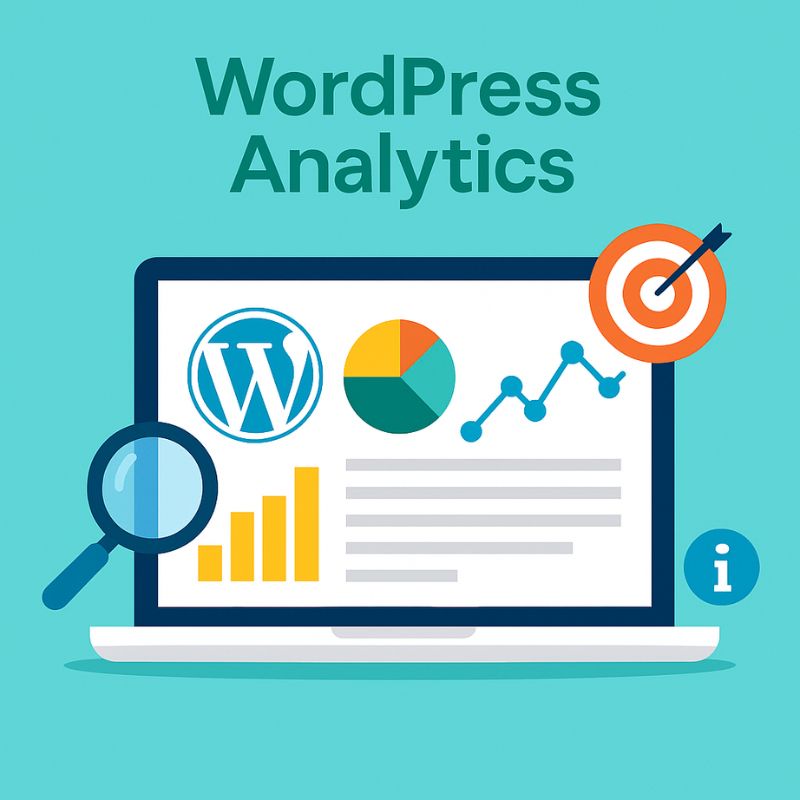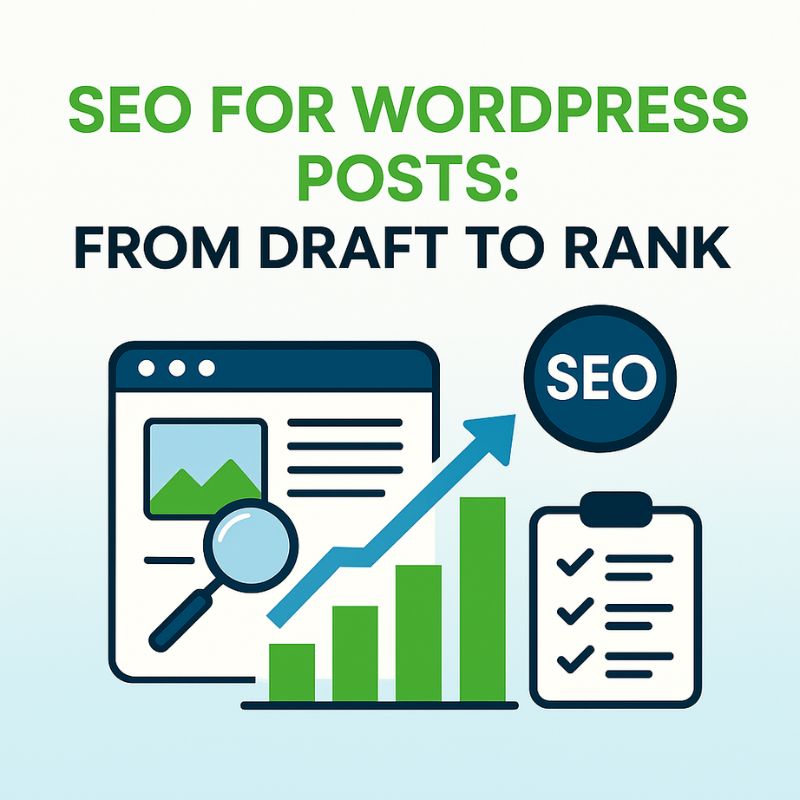Analytics for WordPress: What to Track (and Why)

WordPress Analytics: What to Track (and Why)
If you want reliable growth, you need data; otherwise, decisions become guesswork. Therefore, teams invest in wordpress analytics to learn who visits, what they read, and where they convert. In addition, measurement clarifies which channels deserve budget and which pages require improvement. As a result, your content becomes sharper, your UX improves, and your ROI increases.
Why WordPress Analytics Is Essential
First of all, analytics connects activity to outcomes. For example, you can link a blog post to sign-ups or revenue rather than assuming it works. Moreover, with dashboards that show trends over time, you notice seasonality, diagnose drops quickly, and, consequently, avoid knee-jerk reactions. Finally, shared metrics align content, SEO, and product teams around the same goals.
How to Set Up Analytics in WordPress
To begin, choose a dependable stack that balances power and simplicity. Typically, Google Analytics plus Google Tag Manager covers most needs. With Tag Manager, you can publish new events without code deployments; therefore, iteration speeds up dramatically. Additionally, verify your property in Google Search Console so you can see queries, impressions, and Core Web Vitals.
Meanwhile, avoid plugin overload. Instead, keep one lightweight integration and document exactly which events you track. For step-by-step context, see our guide on starting a WordPress blog; it covers setup considerations new sites often miss. Likewise, our overview of WordPress browser plugins helps you choose tools without bloat.
Important Website Metrics to Monitor with WordPress Analytics
Although dozens of charts are available, a focused set of KPIs keeps you effective. Consequently, start with the essentials below and expand only when a clear decision requires more data.
Traffic Sources in WordPress Analytics
Where visitors come from determines where you should invest. For example, if Organic Search delivers most sessions, strengthen content clusters and on-page SEO. Conversely, if social brings little but engages deeply, consider promoting top posts there. In addition, always tag campaigns with UTM parameters; as a result, you can compare email, paid, and partner traffic accurately.
Popular Pages and Site Analytics
High-performing pages reveal what resonates. Therefore, identify landing pages that consistently attract new users and add contextual CTAs plus internal links. For instance, if readers research browsers, guide them to: Google Chrome Guide 2025, Firefox Browser Guide 2025, Microsoft Edge 2025, Opera Browser 2025, and Chrome vs Brave. Consequently, session depth and dwell time increase naturally.
Bounce, Engagement, and WordPress Tracking Insights
A high bounce rate might signal a mismatch between the promise and the page; however, single-page sessions are not always negative. Therefore, pair bounce with engagement rate, scroll depth, and average engagement time. If people drop off early, improve the hook, add subheadings for scannability, and, moreover, surface a summary near the top.
Conversions and Goals in Analytics for WordPress
Ultimately, goals translate attention into outcomes. Define macro-conversions (purchases, bookings, demo requests) and micro-conversions (newsletter sign-ups, video plays, time-on-page). In addition, use Tag Manager to fire events consistently across templates. As a result, you can attribute wins to specific pages, campaigns, and UX changes.
User Experience and Technical Signals in WordPress Analytics
Because experience drives retention, track device mix, browser usage, and loading performance. Similarly, monitor form errors and search queries to discover friction points you might miss otherwise.
Devices, Browsers, and WordPress Analytics Insights
If a majority of sessions are on mobile, prioritize responsive typography, tap targets, and lazy-loaded media. Likewise, check browser breakdowns to catch rendering issues early. To plan testing effectively, compare our detailed reviews on the browsers listed above; they provide practical expectations for users across ecosystems.
Core Web Vitals and Site Analytics
Speed and stability influence both UX and SEO. Therefore, track Largest Contentful Paint (LCP), Interaction to Next Paint (INP), and Cumulative Layout Shift (CLS). Measure via PageSpeed Insights and field data in Search Console. If LCP is slow, compress images, serve next-gen formats, and, moreover, defer non-critical scripts to improve responsiveness.
Advanced Analytics in WordPress: Going Beyond Basics
After the fundamentals are stable, expand carefully. For example, implement event funnels to understand journeys from landing to conversion. Additionally, use content groupings to compare categories, and integrate ecommerce tracking if you run WooCommerce. Meanwhile, heatmaps such as Hotjar complement numbers with visual behavior; as a result, you can see where attention pools and where it fades.
Internal Linking That Lifts Metrics
Thoughtful internal links guide readers logically. Therefore, place links in-context rather than in a generic list. When explaining setup or tools, reference our resources again: Start a WordPress Blog and WordPress Browser Plugins. Consequently, you improve crawl paths, distribute authority, and help users explore related material without friction.
Common Mistakes with WordPress Analytics
- Tracking everything, learning little: Instead, limit KPIs to those tied to revenue or retention.
- Over-reliance on plugin dashboards: Therefore, validate with Google Analytics and Tag Manager for consistency.
- Ignoring segmentation: For example, compare mobile vs. desktop and new vs. returning; otherwise, averages will mislead you.
- Letting tags proliferate: Moreover, schedule monthly audits to remove dead events and reduce noise.
- Skipping privacy checks: Consequently, use a compliant consent banner and document data usage clearly.
Long-Term Strategy Using Analytics in WordPress
Analytics is not a one-and-done task; rather, it is an operating system for decisions. Set a weekly review to spot anomalies, a monthly retro to reprioritize experiments, and a quarterly reset to refine KPIs. In addition, annotate major releases in your analytics timeline; as a result, you can explain spikes or dips without guesswork. Finally, share a one-page “insights memo” so stakeholders know what changed and what to do next.
From Insight to Action: A Lightweight Workflow
- Observe: Review dashboards; meanwhile, mark significant events such as launches or promos.
- Diagnose: Segment by channel, device, and landing page; in addition, inspect on-page behavior with heatmaps.
- Hypothesize: State a clear “if-then” change—for example, “If we surface FAQs above the fold, then engagement will rise.”
- Test: Ship an A/B or soft launch; therefore, you can validate quickly without committing fully.
- Decide: Keep winners and sunset losers; consequently, your experience improves iteratively.
Conclusion: Smarter Growth with WordPress Analytics
In conclusion, use wordpress analytics to replace intuition with evidence. Because you measure the right things, you can focus on pages that convert, channels that scale, and improvements that compound. Moreover, by balancing essentials with advanced views, you avoid dashboard sprawl while retaining depth. Finally, remember that analysis matters only when it changes behavior; therefore, review, decide, and act—week after week.

